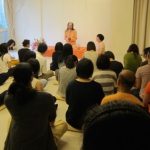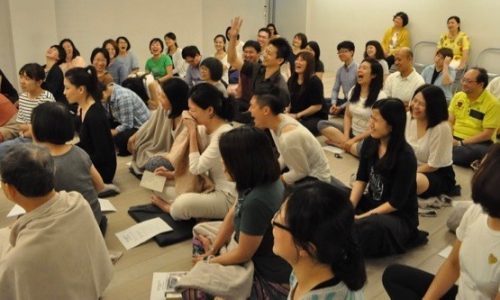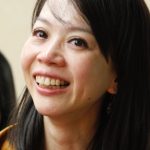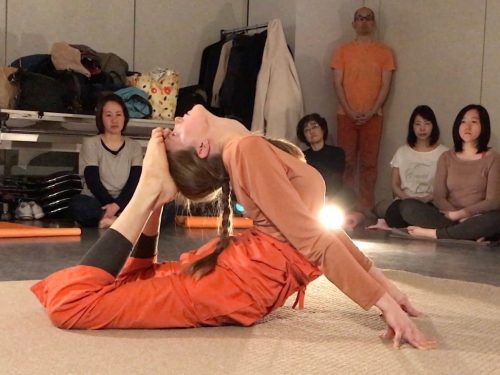Friday March 23, 2018 NYC
BUDDHA AND MODERN TIMES:
The Essence of the Words of Buddha:
People Aren’t Saved Merely
By Getting Comfort From Hearing His Words
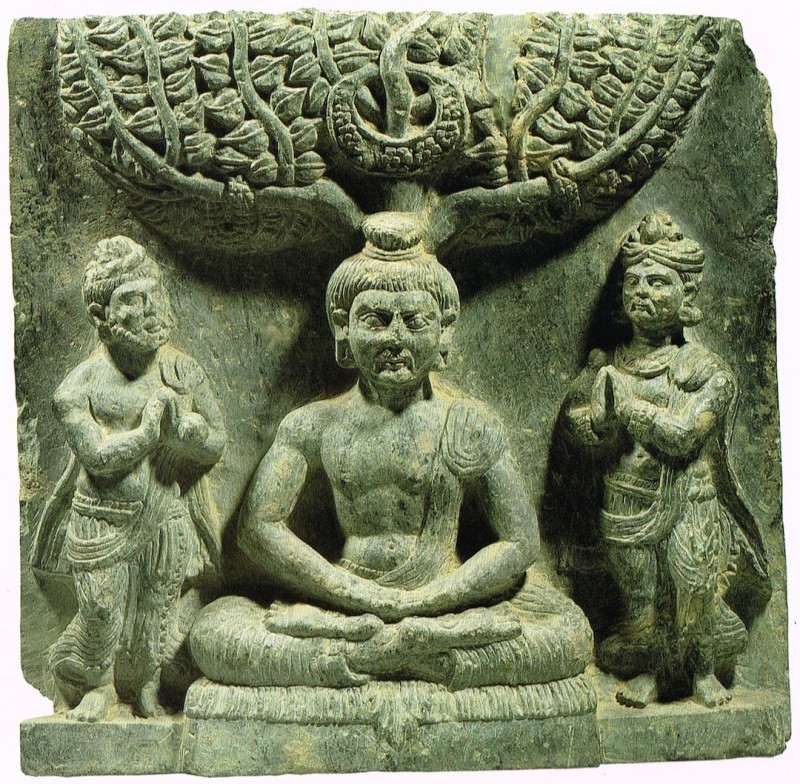
“Brahma Urges Buddha to Teach”
How the Words of Buddha are Consumed
Buddha’s words are very popular, even to this day. There are many books available, and every once in a while they become trendy again. Perhaps people who buy these books or search for them on the internet are trying to get answers or hints about how to deal with the concrete personal problems they are facing, their vague or general anxiety, or the various doubts they have in life.
This may not be limited to Buddha, but it may be the primary motivation in general as to why people seek words from Holy or Great Beings from the past, or from successful people and celebrities of modern times (i.e. the famous words from Nietzsche, Dale Carnegie, Steve Jobs, etc.)
Especially when people look for words from people who are considered to be Holy Beings or saints, such as Buddha, I suppose that they are looking for salvation in the form of an immediate remedy or some relief from an emotional problem, such as an answer to their anger, sadness, or their pain.
Looking at books with titles that have words like, “The Words and Teachings of Buddha,” etc, they are often edited in such a way as to meet the above needs. The fact that these books sell so well implies that those needs exist, and that Buddha’s words are consumed based on those needs.
The Attitude of Buddha Himself
However, when you read Buddha’s words (i.e. the most ancient Buddhist scriptures) just as they are, we can see that Buddha never uttered words based on a temporary remedy or for comfort or relief, nor did he just answer with something that the questioners expected to hear.
Take as an example the famous story of Kisa Gotami.[1] We can see in this story that even to this mother, who had lost her child and gone mad, even towards the person who most needed such an immediate remedy, he did not simply tell her words of consolation, but rather guided her in such a way that she could think for herself and recognize the truth of the world.
Footnote [1]: Buddha told her to bring a mustard seed from a family that had not had any deaths. She searched for it but could not find any such house. When she returned to Buddha, Buddha then taught her the Truth. And she became his disciple.
Even when it comes to thinking and translating his words into action, to those who came to him with an attitude of, “I can’t get into action unless I understand the meaning of that action fully,” Buddha did not give the immediate answer that was expected. The famous example of this is the analogy of the “Poison Arrow.”[2] To a disciple who asked, “Is the world eternal or not?” “Is the world limited or limitless”—he did not give an answer that the mind of his disciple wanted to hear.
Footnote [2]: This is the teaching that one should first remove the arrow, rather than over-analyzing where the arrow comes from and the details of the arrow.
Our False Expectations of the Words of Buddha
Naturally, if Buddha were to be living here now in this modern world, he would not answer questions like, “How do I succeed in business?” or “What is the trick to maintaining health and beauty?” And even if you were to make requests such as, “I’m sad, please give me some words of comfort,” or “Please teach me how to calm down my anger immediately,” or “Please teach me how to get myself motivated,” or “Is there a magical mantra that gets rid of my depression?” he would not answer in the way people would expect. (Just like he brought the realization to the mother who asked him to revive her child in the story of Kisa Gotami, “death is inevitable to all.”)
Indeed, we are expecting the “magic mantra” that gives comfort and relief from the words of Buddha. We want that instant comfort, as if we could be healed immediately from being hugged by a saint. That is why once our minds feel comfort, we forget about Buddha. Then we fall into the same suffering and sadness again.
I think that we are all used to getting an immediate answer. On TV, we see the conclusion within 30 minutes to an hour of a show. If we search for anything on the internet, some kind of answer-like things are found. We don’t have the endurance to continue to seek something that is “difficult or perplexing,” something that doesn’t have an immediate answer.
Another cause of this may also stem from the education we have received. That education rewards the rote memorization of difficult questions, where you can just find the answers first and memorize them as soon as you get stumped, rather than thinking tenaciously about a difficult question. (Oftentimes, [in Japan,] victory or defeat when taking the school tests and entrance exams depends on how many correct answers you were able to memorize.)
However, the issues we face in life are nothing like workbooks from school, where the answers are written at the back of the book. Rather, it is required to face any unanswered questions head-on, and come up with our own answers by thinking them through for ourselves. It’s not as simple as being able to solve the problem because you were taught the right answer. It’s not as simple as just asking Buddha or the saints for an answer, and then thinking as if everything is fine once you get the answer from them, without going through the process of examining this within ourselves. It doesn’t work this way.
The Words of Buddha are not Merely for Healing and Comfort
This is all the more true considering the way Buddha taught and guided people was correct.
Because the way he answers is different from that of merely satisfying people’s minds at once, though his words might have been hard to understand, and they may not have been so popular. (In fact, in some of the old writings of Jainism, there was a point when Buddha was not recognized as the founder of Buddhism.) It is said that Buddha himself thought, “This Truth is too subtle for anyone to understand,” and hesitated to preach it. Back in his time, it seems that many practitioners were insisting on their own way, “This is the only Truth. And only through this teaching and these precepts, can you become pure.” So it seems that Buddha had a hard time with people who came to him to seek such teachings and precepts. (Sutta Nipata, Ch. 4)
The salvation that Buddha performed was not by means of just giving words of comfort or healing to the mind, or of some method that was immediately useful. Considering this, I suspect that the type of books entitled something like, “Heal Your Mind Just by Reading Buddha’s Words or Sayings” are different from what Buddha intended. I suspect that the words of Buddha are not like something you would expect to have the result from the feeling of “I really got a lift from reading this book, which we often hear these days, even though this was not Buddha’s intention.
Temporary comfort may provide an effect just like that of pain-killers, which suppress suffering, or like anesthesia, but it does not have the lasting effect that completely eradicates the confusion of the mind. Even if Buddha’s words contained continuous guidance, if we just take his words for the part that is convenient for us, against his original intentions, then we are merely projecting our own minds’ hopes onto it. To just remain satisfied with oneself only by reading a book, or not thinking further about the teaching after hearing it, is the same as taking a pain-killer only for the temporary relief and then never going back to the doctor again to get the fundamental approach for treatment.
Don’t Let Yourself Become Complacent By Just “Listening”;
Confront Your Own Mind With the Words of Buddha By Applying Your “Thinking” Against Them
Then what should we do? In Buddhism and in Yoga, we are taught that “the Truth must be heard, thought about, and meditated upon.” It is a problem if we just stop at the level of “heard.”
Originally, the teachings of Buddha or of Yoga were devised to prevent us from just being satisfied by listening to them. (For example, Buddha never answered “what he realized” or used any particular name for God.) However, if we stop once we are satisfied with only the part that we have selectively and conveniently taken from his words, then it is quite possible that the continuity of the process in which we shift and transition into the step of “thinking” is cut off.
So instead, we must think about the question, “What was it that Buddha meant?” and, “If I am to transfer that into my own action, how should I do it?” Or we must confront whatever incongruity we have within ourselves, or any fear we feel, or ego that arises from within us when we hear these words. And with utmost seriousness, as if we are in a real duel with a “real sword,” we must challenge our mind in a showdown between the mind and Buddha.
No matter how gentle the words of Buddha are, if we really try to grasp their true intention, to approach the state of Buddha who uttered these words, and to actually put them into action, then we will need an appropriate, or rather, an incredible depth of contemplation and inner struggle.
For example, can we really understand Buddha’s state of mind when he said, “It is better to live one day seeing the state of Deathlessness, than to live a hundred years without seeing it” (Dhammapada, Verse 114)? Even if it’s not the state of Deathlessness, do we even have something that we can stake our lives on?
We say that family is important, we say that work is important, but can we really say that we’d rather see our family’s face one day than live for a hundred years? Or can we say that we don’t care if we are demoted or unpaid if we accomplish one important project at work? When we consider these things seriously, that’s when various things arise within the mind and a serious battle occurs as the mind is dissected and laid bare.
We must not stop at just being complacent with hearing the words and teachings. Then there would be no point as to why Buddha uttered these words. Buddha’s words will only become effective when we transition from “hearing” his words to “thinking about” his words. Buddha’s words are words that have that intention underlying them.
The Essential Value of the Words of Buddha
The salvation that comes through Buddha is not just a temporary relief. It is not a pain-relieving anesthesia that allows us to turn away from reality. It is not about remembering the right answers. It is about acquiring methods for resolving problems. As Buddha explained at the end of the analogy of the “Poison Arrow,” it is to acquire the teachings of the Four Noble Truths—Suffering, its Cause, the Elimination of its Cause, and the Path for eliminating that—so that we can apply them to every problem that arises, be it in meditation or in daily life.
Then, by being able to cultivate the power to solve these problems by ourselves, we are able to acquire sustainable help and salvation.
From Temporary Help to Sustainable, Continuous Help
Swami Vivekananda, a Yogi who understood Buddha best, in my opinion, said that there are three types of help that we can give to others: material, intellectual, and spiritual.
To feed the hungry is a type of material help that is needed immediately. However, the effect of that help is short lived. It will only relieve their suffering for a moment.
Intellectual help does have more continuity. By receiving specialized knowledge or techniques, a person can find a job and sustain his or her own livelihood.
And I think that this “intellectual help” itself is equivalent to the “think” part of the “hear, think, and meditate.” It is the ability to continuously resolve issues by oneself without having to depend on others.
If we just stop at the level of “hearing” and do not proceed to “thinking,” then it is like we keep lining up at the soup kitchen, but we never go get a job. In that moment, the stomach fills up. But the next day, we get hungry again. Buddha can give us help to even go beyond the intellectual level, to the spiritual level, yet if we continue to return to the soup kitchen for bread, it feels so sad.
What We Ought to Seek From the Words of Buddha
Then, beyond the step of “thinking,” there is “meditating,” just like there is spiritual help beyond the intellectual help. We can say that out of the three types of help, material-intellectual-spiritual, the spiritual help can further be divided into temporary help by “listening,” continuous help by “thinking,” and everlasting help by “meditating.”
Vivekananda was a saint who appeared in the 19th century in India under British colonization. In order to tackle the issue of poverty and discrimination, he had to put all of his energy into providing material and intellectual help (through welfare aid for the poor and through helping in the plagued areas, building hospitals and schools.)
In comparison, as we live in modern Japan, I think that we are getting to the point where we do not really need material or intellectual help as the first and foremost thing from Buddha or from Yoga. If that is so, then we should really seek help from Buddha as he originally intended it to be. Not only remaining at “hearing,” but continuing on to “thinking” and further leading to meditation—that is the salvation that is continuous and everlasting. The time is now. Now is the time to truly know Buddha.
Sanatana
Translation of the Mahayogi Mission blog in Tokyo, October, 2015

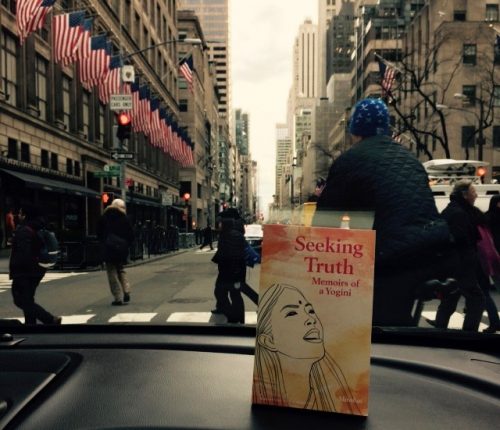 ANNOUNCEMENT:
ANNOUNCEMENT: 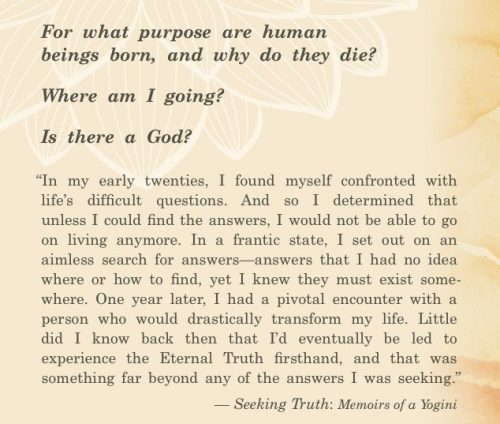
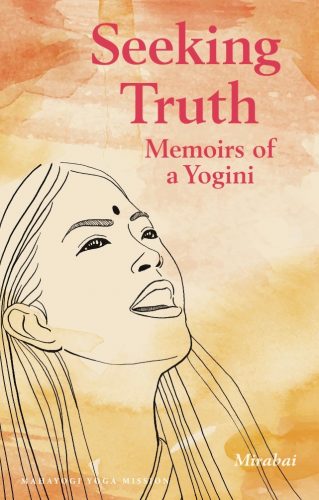
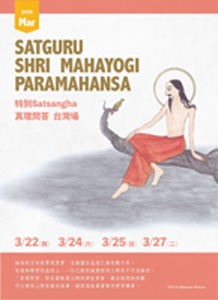 Announcement:
Announcement: 